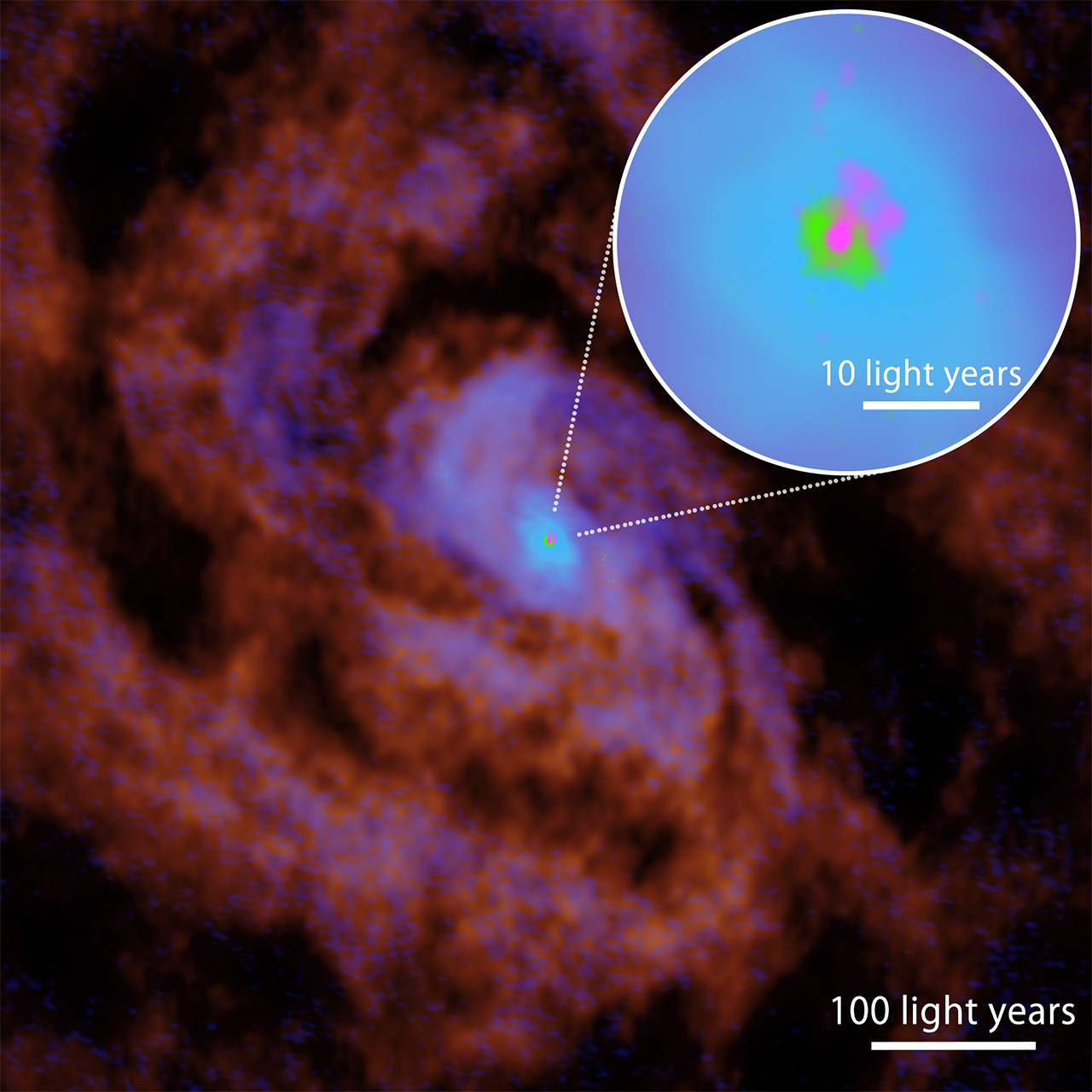
New observations down to light-year scale of the gas flows around a supermassive black hole have successfully detected dense gas inflows and shown that only a small portion (about 3 percent) of the gas flowing towards the black hole is eaten by the black hole. The remainder is ejected and recycled back into the host galaxy.
Not all of the matter which falls towards a black hole is absorbed, some of it is ejected as outflows. But the ratio of the matter that the black hole "eats," and the amount "dropped" has been difficult to measure.
An international research team led by Takuma Izumi, an assistant professor at the National Astronomical Observatory of Japan, used the Atacama Large Millimeter/submillimeter Array (ALMA) to observe the supermassive black hole in the Circinus Galaxy, located 14 million light-years away in the direction of the constellation Circinus. This black hole is known to be actively feeding.
Thanks to ALMA's high resolution, the team was the first in the world to measure the amount of inflow and outflow down to a scale of a few light-years around the black hole. By measuring the flows of gasses in different states (molecular, atomic, and plasma) the team was able to determine the overall efficiency of black hole feeding, and found that it was only about 3 precent. The team also confirmed that gravitational instability is driving the inflow. Analysis also showed that the bulk of the expelled outflows are not fast enough to escape the galaxy and be lost. They are recycled back into the circumnuclear regions around the black hole, and start to slowly fall towards the black hole again.
Detailed Article(s)
Supermassive Black Hole Feeding and Feedback are Finally Resolved at the Center of an Active Galaxy
ALMA
Release Information
Researcher(s) Involved in this Release
- Takuma Izumi (Assistant Professor @ National Astronomical Observatory of Japan)
- Keiichi Wada (Professor @ Graduate School of Science and Engineering, Kagoshima University)
- Kotaro Kohno (Professor @ Institute of Astronomy, Graduate School of Science, The University of Tokyo)
- Yutaka Fujita (Professor @ Department of Physics, Graduate School of Science, Tokyo Metropolitan University)
- Taiki Kawamuro (Special Postdoctoral Researcher @ RIKEN Cluster for Pioneering Research)
- Naoki Matsumoto (Master Student @ Graduate School of Science, Tohoku University)
Coordinated Release Organization(s)
- National Astronomical Observatory of Japan
- Kagoshima University
- Tokyo Metropolitan University
- The University of Tokyo
- RIKEN
- Tohoku University
Paper(s)
- Takuma Izumi et al. "Supermassive black hole feeding and feedback observed on sub-parsec scales", in Science, DOI: 10.1126/science.adf0569






